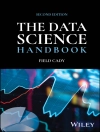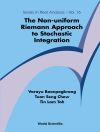Complex mathematical and computational models are used in all areas
of society and technology and yet model based science is
increasingly contested or refuted, especially when models are
applied to controversial themes in domains such as health, the
environment or the economy. More stringent standards of proofs are
demanded from model-based numbers, especially when these numbers
represent potential financial losses, threats to human health or
the state of the environment. Quantitative sensitivity analysis is
generally agreed to be one such standard.
Mathematical models are good at mapping assumptions into
inferences. A modeller makes assumptions about laws pertaining to
the system, about its status and a plethora of other, often arcane,
system variables and internal model settings. To what extent can we
rely on the model-based inference when most of these assumptions
are fraught with uncertainties? Global Sensitivity Analysis offers
an accessible treatment of such problems via quantitative
sensitivity analysis, beginning with the first principles and
guiding the reader through the full range of recommended practices
with a rich set of solved exercises. The text explains the
motivation for sensitivity analysis, reviews the required
statistical concepts, and provides a guide to potential
applications.
The book:
* Provides a self-contained treatment of the subject, allowing
readers to learn and practice global sensitivity analysis without
further materials.
* Presents ways to frame the analysis, interpret its results, and
avoid potential pitfalls.
* Features numerous exercises and solved problems to help
illustrate the applications.
* Is authored by leading sensitivity analysis practitioners,
combining a range of disciplinary backgrounds.
Postgraduate students and practitioners in a wide range of
subjects, including statistics, mathematics, engineering, physics,
chemistry, environmental sciences, biology, toxicology, actuarial
sciences, and econometrics will find much of use here. This book
will prove equally valuable to engineers working on risk analysis
and to financial analysts concerned with pricing and hedging.
A propos de l’auteur
Andrea Saltelli, Francesca Campolongo, Jessica Cariboni, Debora
Gatelli, Fulvia Pennoni, Marco Ratto, Michaela Saisana,
Stefano Tarantola – Joint Research Centre of the European
Commission, Ispra, Unit of Applied Statistics and
Econometrics.
Presently leading the Econometric and Applied Statistics Unit of
the Joint Research Centre, lead author Professor Saltelli has
published many articles in numerous journals over the last 30
years. He is also the main author and main editor of two previous
books (both for Wiley).
Terry Andres – Department of Computer Science, University
of Manitoba.
Dr Andres is one of the few people to successfully develop a
graduate level sensitivity analysis course. He has delivered
numerous courses to both students and practitioners and is an
expert in experimental design.












